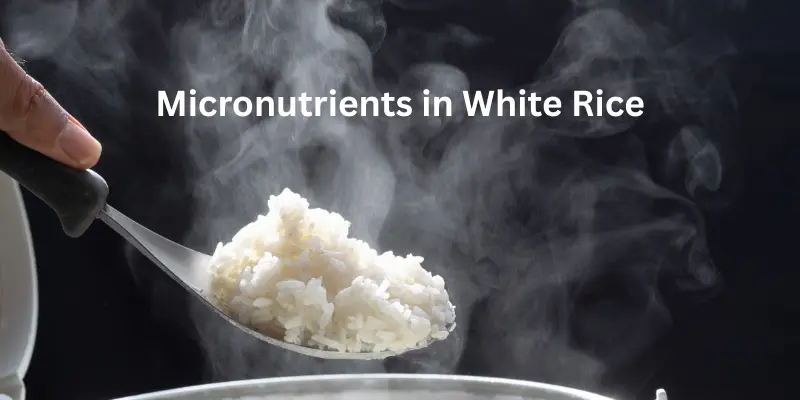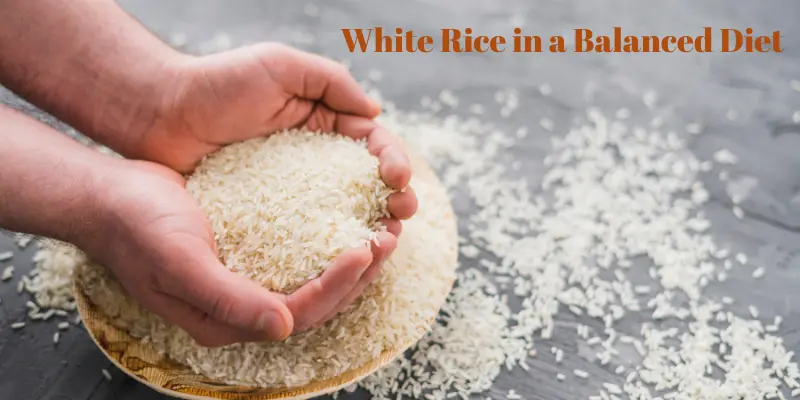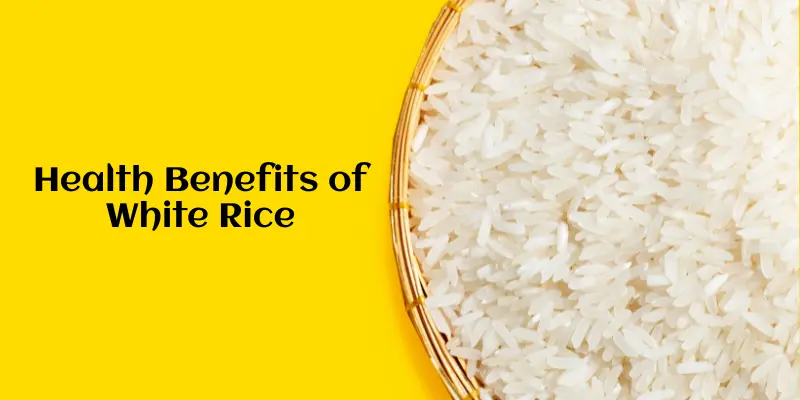Nutrition White Rice | Facts and Health Value
Published: 16 July 2025
Nutrition White Rice is a simple, common food eaten in many homes around the world. It is soft, easy to cook, and gives quick energy to the body. This grain is often chosen for its mild taste and smooth texture. White rice has a clean source of carbohydrates, which help the body stay active during the day. While it has fewer nutrients than brown rice, it still plays a helpful role in meals when paired with other healthy foods. Many people use white rice as a base in their daily diet because it is light, filling, and supports energy needs without being heavy on the stomach.
Micronutrients in White Rice
White rice may seem simple, but it contains small amounts of important micronutrients. It includes B vitamins like thiamine (B1), niacin (B3), and folate (B9), which help the body turn food into energy. These vitamins also support the brain and nervous system.
White rice also has minerals such as iron, magnesium, and manganese. Iron helps carry oxygen in the blood, while magnesium supports muscle and nerve function. Manganese helps the body use carbs and protein properly.

Although white rice has fewer micronutrients than brown rice, it still plays a role in giving the body quick energy and light nourishment, especially when combined with other healthy foods.
Eating white rice with vegetables or lentils can help boost its overall nutrition.
Macronutrients in White Rice
White rice is a rich source of energy. It mainly contains carbohydrates, a small amount of protein, and very low fat. One cup of cooked white rice gives around 200 calories. Out of these, most come from carbs, making it a quick fuel source for the body.
Carbohydrates in white rice are simple and easy to digest. These carbs help in restoring energy after physical activity. For people with high energy needs, like workers or athletes, white rice supports quick recovery.
Protein in white rice is low but still useful. One cup gives about 4 grams of protein. Though it’s not a complete protein, it still helps the body in muscle repair when eaten with other protein-rich foods.
Fat content in white rice is nearly zero. This makes it a good option for low-fat meal plans. It’s light on the stomach and easy to cook, especially for people with weak digestion.
White Rice in a Balanced Diet

- White rice gives quick energy due to its high carbohydrate content.
- It pairs well with vegetables, beans, and lean meats for a full meal.
- Eating white rice with fiber-rich foods slows down sugar release.
- Proper portion size helps manage weight and blood sugar.
- It’s easy to digest, making it good for people with stomach issues.
- White rice can be part of healthy meals if not eaten in excess.
Health Benefits of White Rice
White rice is a quick source of energy. It provides carbohydrates that help the body stay active and alert. People who need fast fuel, like athletes or workers, can eat white rice to feel full and strong.
It is soft and easy to digest. This helps people with weak digestion or stomach issues. After illness or surgery, white rice is often used because the body can absorb it easily without stress.

White rice contains small amounts of iron, B vitamins, and magnesium. These help support the body’s daily needs. B vitamins help with energy and brain function.
It is low in fat and has no cholesterol. That makes it a good choice for people watching their weight or looking for heart-friendly foods.
Best Ways to Cook White Rice for Nutrition
- Rinse Before Cooking
- Washing removes extra starch, making rice lighter and easier to digest.
- Use the Right Water Ratio
- Stick to a 2:1 water-to-rice ratio to keep nutrients locked in.
- Cook on Low Heat
- Slow cooking helps rice absorb water fully without breaking nutrients.
- Avoid Overcooking
- Soft, overcooked rice loses texture and some vitamins.
- Steam Instead of Boiling
- Steaming helps retain minerals and natural flavor.
- Let It Rest After Cooking
- Resting for 5–10 minutes keeps rice fluffy and nutrient-rich.
Conclusion
White rice gives quick energy, supports body functions, and fits well in many meals. Its simple taste and light texture make it easy to eat with other healthy foods. By watching portions and pairing it with protein and fiber, white rice can be part of a smart eating plan. People who need more energy or easy-to-digest meals can benefit from it. Always focus on balance and your health needs when adding white rice to your diet.

- Be Respectful
- Stay Relevant
- Stay Positive
- True Feedback
- Encourage Discussion
- Avoid Spamming
- No Fake News
- Don't Copy-Paste
- No Personal Attacks

- Be Respectful
- Stay Relevant
- Stay Positive
- True Feedback
- Encourage Discussion
- Avoid Spamming
- No Fake News
- Don't Copy-Paste
- No Personal Attacks





